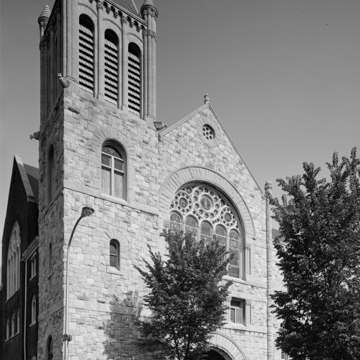The concentration of free Black people on the periphery of the city along Lombard and South streets led to the founding of the African Methodist Episcopal Church. It was led by Richard Allen, a former slave, who was licensed to preach by the Methodists in 1784 and who formed his own congregation a decade later. But frustrated at persistent discrimination within the Methodist Church, he seceded in 1816 to form the African Methodist Episcopal Church, serving as its first bishop.
The rusticated masonry, massive corner tower, and great stone arch above this church's rose window show this is another of the many churches influenced by H. H. Richardson's Trinity Church in Boston. Within, the church's golden oak interior and rich array of leaded glass windows enrich the broad auditorium of the main floor while the Sunday school is below. This two-story plan was typical of large urban Methodist churches of the nineteenth century. Bishop Allen is buried in a crypt within the church. A small museum of the church and its founders is open by appointment. Other modest church buildings for African American denominations are scattered to the west along Lombard Street.


